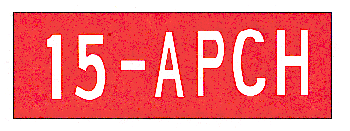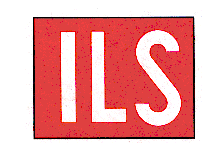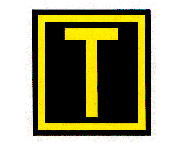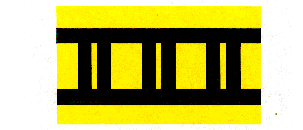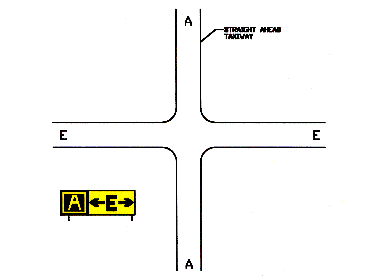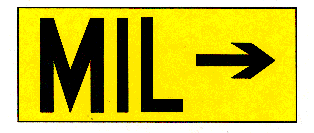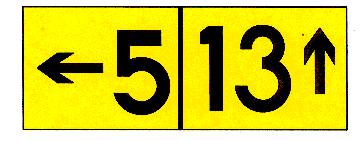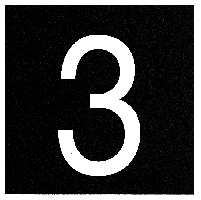Mandatory Instruction Signs
These signs have a red background and white inscription and are used to denote the entrance to a runway or critical area. They are also used to denote any area an aircraft is prohibited from entering.
Mandatory instruction signs are placed at holding positions and accompany the holding position markings. You will find them at runway hold short lines, runway intersections, runway approach hold lines, and ILS critical hold lines.
The numbers on the sign are arranged to correspond to the respective runway threshold. For example, the sign below indicates that the Runway 15 threshold is to the left and the Runway 33 threshold is to the right.
At a runway intersection, arrows may be used to aid in the identification of a runway that intersects at an angle.
This sign indicates the runway hold position marking you are about to cross protects the Runway 15 approach area. You would hold short at this position if specifically instructed by the tower.
Here is an example of the holding position sign for an ILS critical area. It accompanies the ILS critical area hold short position marking.
One other use for mandatory instructions signs is to mark an area an aircraft is prohibited from entering. These signs are typically located on paved surfaces, such as vehicle roadways, which may be mistaken for a taxiway or other surface usable by aircraft. If a taxiway is intended for use only in one direction, this sign is used to denote entrance to the taxiway in the wrong direction.
Location Signs
Location signs aid the pilot in identifying the designation of the taxiway or runway they are on. They are also used to provide additional visual cues as to the location of runway or ILS critical area boundaries.
Taxiway and runway location signs consist of a black background with a yellow inscription stating the taxiway or runway designation. The designation is surrounded by a yellow border. These signs may stand alone or be collocated with direction or runway holding position signs.
Runway and ILS critical area boundary signs have a yellow background with a black inscription, which graphically depicts the respective holding position markings.
Direction Signs
Direction signs have a yellow background with a black inscription, which identifies the designation or intersecting taxiways. Arrows indicate the direction of turn which places the aircraft on the designated taxiway. Direction signs are normally located on the left side of the taxiway, prior to the intersection.
Here is a more complex example of direction signs:
If the direction sign is located on a runway, however, the sign is placed on the same side of the runway as the taxiway.
Destination Signs
Destination signs have a yellow background and a black inscription, which indicates some destination on the airport. These signs are use to indicate the location of runways, aprons, terminals, military areas, civil aviation areas, cargo areas, international areas, and fixed based operators (FBOs). Arrows are used to indicate the direction of the destination, if necessary.
This destination sign indicates the taxi route to both Runway 27 and Runway 33.
This destination sign indicates that Runway 5 is to the left, while Runway 13 is ahead.
Information Signs
Information signs have a yellow background and black inscription. They provide additional information to pilots. For example, applicable radio frequencies, noise abatement procedures, or a statement that the area you are in cannot be seen by the control tower.
Runway Distance Remaining Signs
Runway distance remaining signs have a black background with a white inscription, which indicates the runway distance remaining in thousands of feet. When used, the pilot is presented with a series of these signs, which count down each thousand feet, to aid the pilot in determining the runway distance remaining. The sign below indicates 3,000 feet of runway remain.


